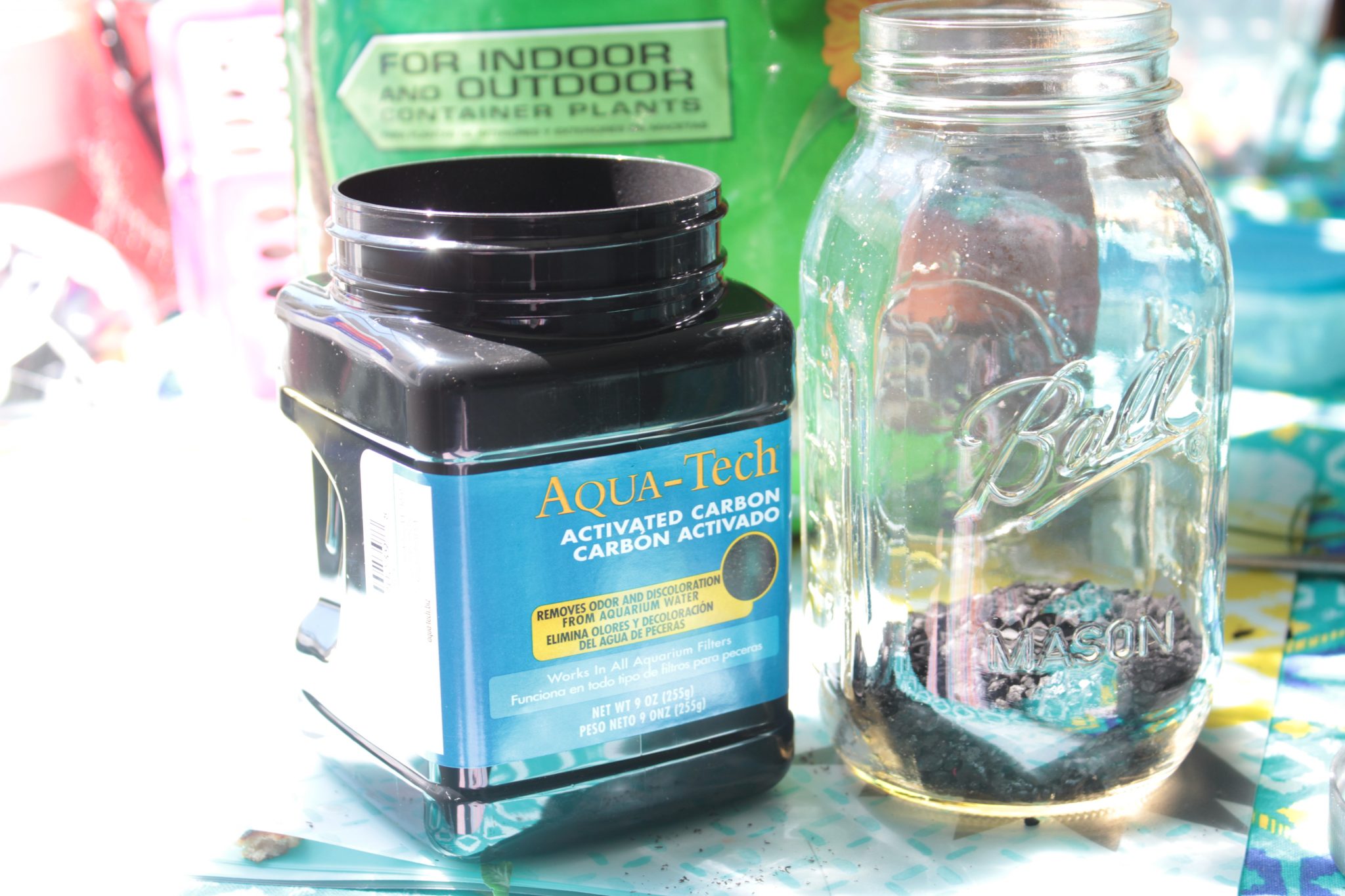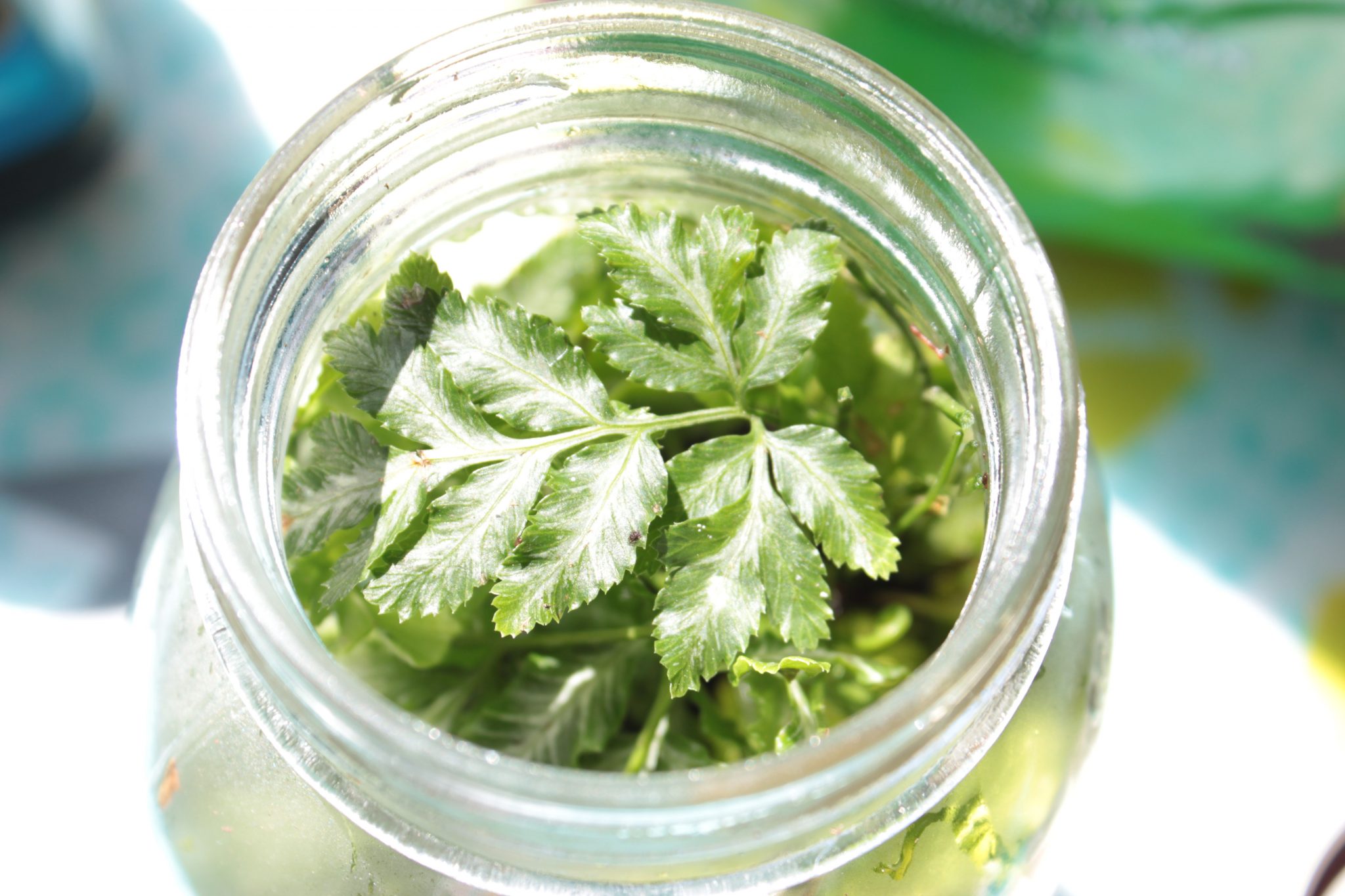One of my favorite subjects growing up was science. Ever since I can remember, things like how eyes work and how to put together a skeleton were really interesting to me. Now that mini is old enough to have appreciation for such things, it’s time to get started with sharing my love of science!
Now, I don’t have a green thumb BUT both mini and I have an obsession with planting and flowers so I figured building a terrarium would be perfect for combining both of our loves here.
STEM Project: Mason Jar Terrariums
Items Needed:
- Mason Jar
with top
- Planting Soil
- Gravel
- Activated Charcoal Powder
(found in the pet section of Walmart/Target or a pet store)
- Moss
- Ferns
Steps:
- Clean out your mason jar and then put in about 1/2 cup of gravel.

- Add the 1/4 cup of charcoal.

- Add about 2 inches of soil.

- Add the moss and ferns.

- Water the roots and seal with the lid.

Teaching About the Water Cycle
The terrarium is a great project that teaches kids in a hands on way about the water cycle. While creating the terrarium, some great questions to ask your child are:
- How do you know if something is living or non-living?
- How are living thing the same/different than non-living things?
- Do all things that are alive move?
- What kinds of non-living things move?
- What are clouds and what are they made of?
- What is rain?
- What happens to puddles after it rains?
The point of these questions is to lead the conversation towards the topics of evaporation, condensation, and precipitation. Keep these things in mind as you guys are building the terrarium.
So how does the terrarium work?
The plants in the terrarium release water vapor into the air (transportation) when there is light and heat present. Because the terrarium is an enclosed environment, when the water leaves the plant (evaporation) and comes in contact with the sides of the glass (or whatever container you’ve chosen), it forms droplets of water on the inside of the glass (condensation). The condensation will then fall back down once enough has gathered (precipitation). The water falls and then gathers in the soil (collection) and then it evaporates and the water cycle continues.
Cool right? Here’s an awesome image from Charger Water that illustrates this cycle:

Picture courtesy of http://www.chargerwater.com/water-sources.
Check out this worksheet to help illustrate the process.







